As teachers we know that vocabulary is pivotal in students’ success. When I was growing up, our vocabulary activities consisted of looking up definitions in the dictionary and copying them down on notebook paper. Do you think I truly understood those vocabulary words?
Not. One. Bit.
In order to truly understand vocabulary words and what they mean, inside and out, you have to manipulate the words and use the words in meaningful ways.
Here are is a collection of 10 fun and engaging vocabulary activities that I have collected through my years of teaching. Hopefully you can find a couple of new ideas to use in your own classroom!
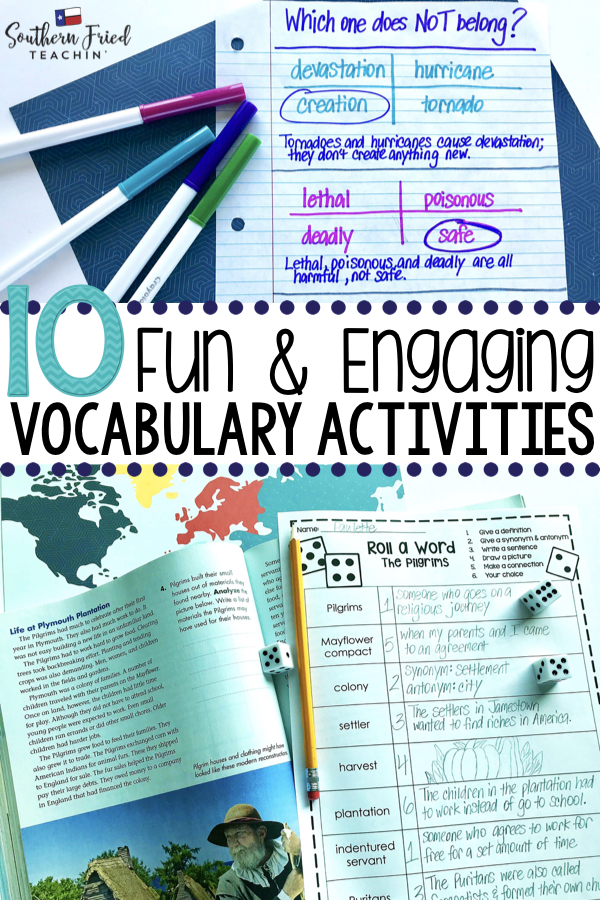
1 – ACT IT OUT >>>>>
Year ago (I won’t tell you how many years….) I taught 3rd grade. We would read stories out of the reading textbook and do activities with the stories. Their favorite activity was acting out the vocabulary words. I still remember to this day the word”amazed”. I gave the story of dreaming of going to Disney Land for years just hoping to see Cinderella’s castle. I finally got to go to Disney Land and saw the castle, and I just stood there staring with my mouth open. I was in awe. I had my students stand up and act out seeing the castle for the first time. They loved it. And they remembered the meaning even months later when I would point to the word on our word wall and ask what it meant. Every single student could tell me. Acting out the word made them remember it. Truly remember it. And understood it.
So get your students up out of their seat and have them act out their words. Have fun with it!
2 – DICE ACTIVITIES >>>>>
I LOVE using dice in the classroom. And students love it too. Dice make practicing vocabulary super fun and engaging for kids. My students actually begged to do these activities. Literally.
Roll a Word: Dice Vocabulary Activities can work with reading passages from different subjects…
Basically all you do is roll one die for each word. The student does the activity according to what number is rolled.
1 – Give a definition
2 – Give a synonym & antonym
3 – Write a sentence
4 – Draw a picture
5 – Make a connection
6 – Your choice
Rolling the die makes it FUN!
In math…
With a book or novel…
Or even with a textbook…
Making a textbook fun and engaging? Yes, it can actually happen!
Click on one of the pictures to purchase this activity. It’s editable, so you can add in your own words to make it work with with any topic, any subject, and any grade. There are two different versions, each one with different numbers of words.
3 – CROSSWORD PUZZLE >>>>>
Have your students create a crossword puzzle with their vocabulary words. Creating clever clues for each word will really make them think hard about each word, especially if you make it to where they can’t use definitions
4 – Word map ~ This one can go so many ways. Creating a word map on vocabulary words stresses students to find the relationships between the vocabulary word and other words. You can include pictures, examples, real world connections, definitions, descriptive words, etc. The possibilities are endless!
Here is an example on cowboys that was created after reading an article on cowboys.
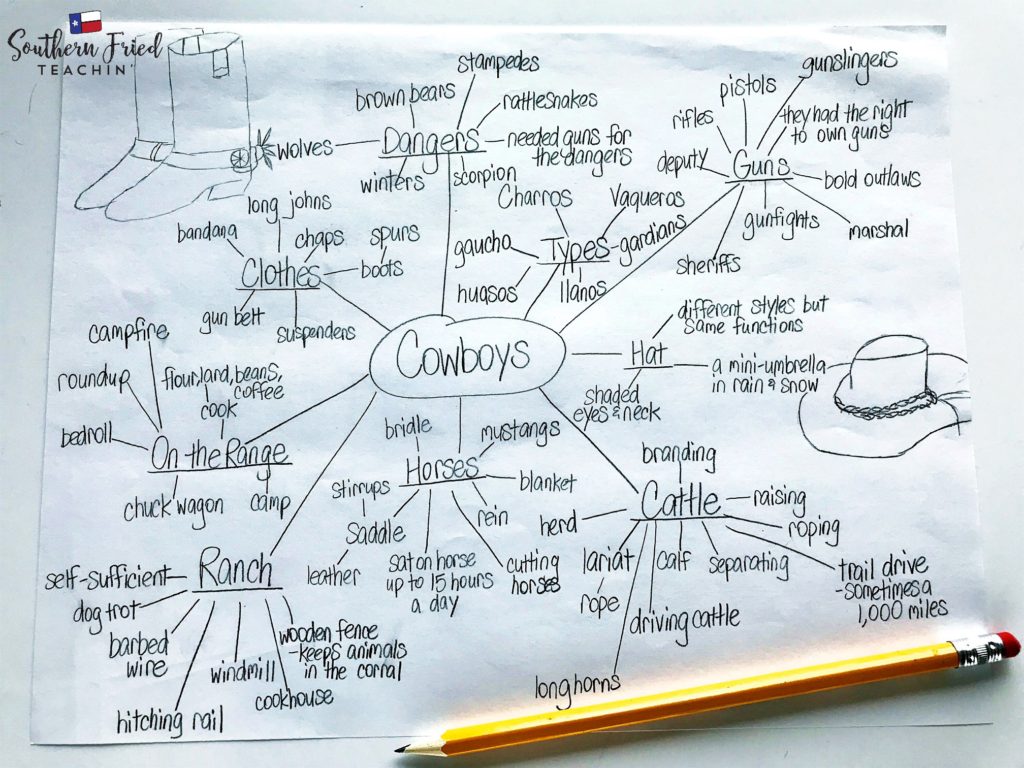
5 – FRAYER MODEL >>>>>
The Frayer model is a graphic organizer used to build vocabulary. There are four parts: definition in your own words, facts or characteristics, examples, and non-examples. I did several examples together with my students before having them do one on their own. I found that these are great to do with a partner or group since they have to collaborate together.
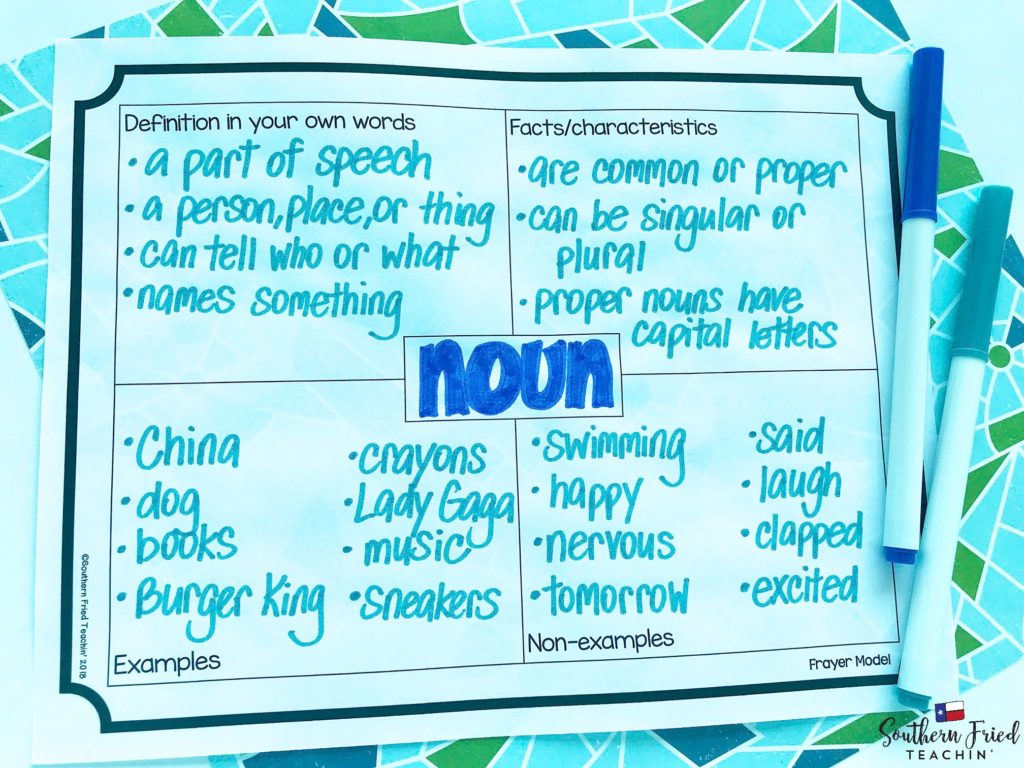
6 – FOOTBALL FEVER VOCABULARY >>>>>
Just like the dice activities in Number 2 above, this activity involves dice. But it also includes a spinner and cards that students can choose from with the same activities. Great for variety! Football Fever Vocabulary also works with any subject, any grade, and any topic. It has a football theme because I’m from Texas, and we love our football!
7 – PICTIONARY >>>>>
My students love playing Pictionary, especially my 6th graders! I would write all the vocabulary cards on cards and put them in a basket. I chose a student to come pick a card and then they would draw a picture of that vocabulary word on the white board. Whoever said the correct word first got to come pick a card next and draw. Every student was engaged, learning, and having fun. This activity was great for a ten minute filler or a rainy day.
8 – WHICH ONE DOES NOT BELONG >>>>>
Do you remember the Sesame Street song, “Which one of these is not like the others?” These task cards ask the same question…which one does not belong? It forces you to think about what things have in common…which leads to thinking about the one that that doesn’t belong with the others. It’s a perfect strategy for children!
An example problem is:
Which one does not belong?
5 + 5
3 + 7
8 + 1
4 + 6
8 + 1 does not belong because it adds up to 9 while the other 3 facts add up to 10
Which one does not belong task cards have critical thinking imbedded in them. Students are forced to dig deeper and use their critical thinking and deductive reasoning skills to figure out which one does not fit with the others.
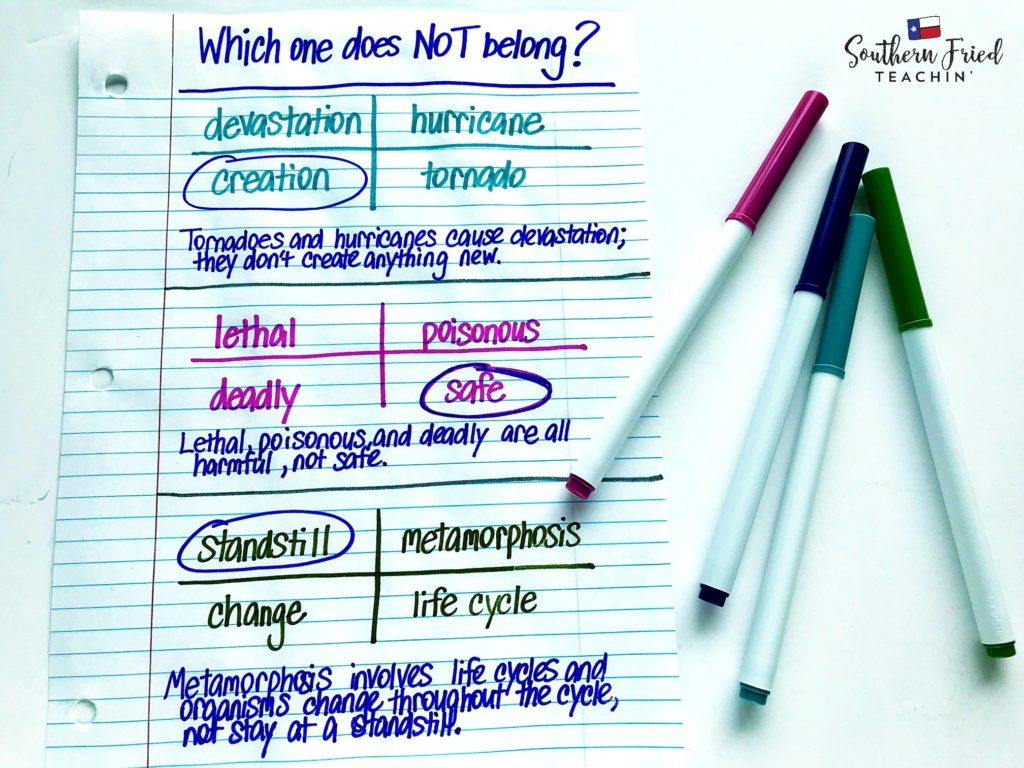
This activity is great for vocabulary since students have to think of synonyms, antonyms, and relationships with other words.
9 – FOUR PART CHART >>>>>
Years ago when I first started teaching I was trying to think of meaningful activities instead of doing worksheets. So I had them take a piece of simple white paper and fold it twice to make four parts and then traced the creases. For each part they would write the vocabulary word, the definition, and then draw a picture.
Remember Number one from above and Cinderella’s castle? After acting out the words, I had my third graders do this activity, and they truly enjoyed it and remembered the words.
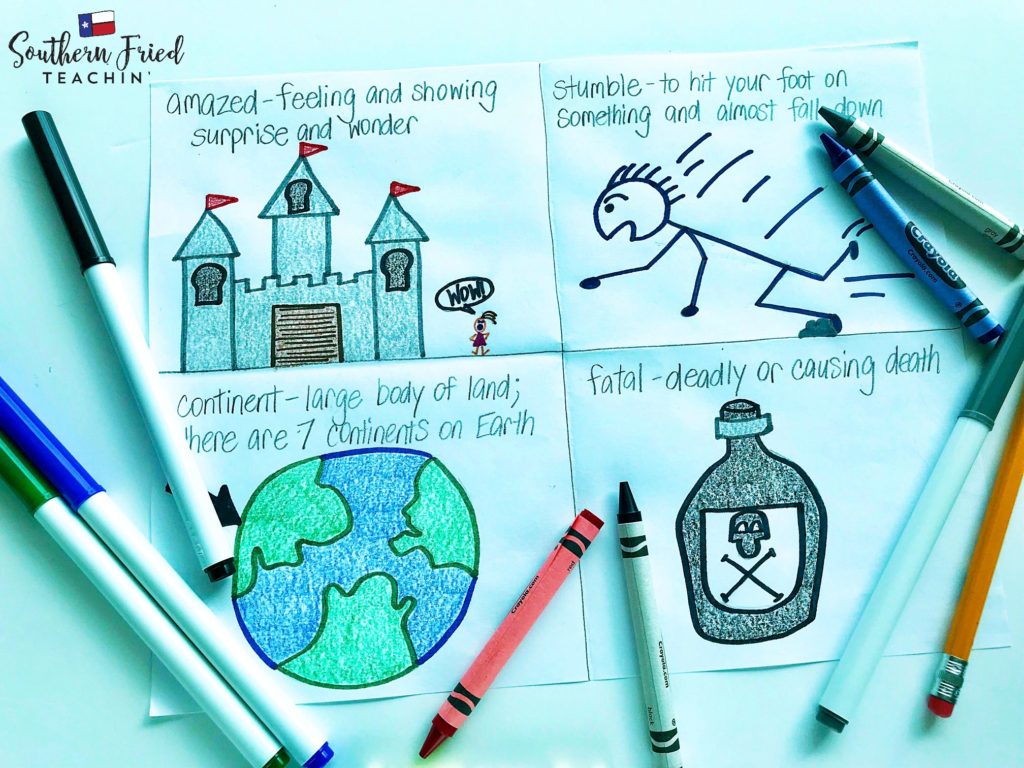
10 – VOCABULARY CHOICE BOARDS >>>>>
I LOVE using choice boards in the classroom. I wrote a blog post about using choice boards HERE.
Vocabulary choice boards are great for giving students a choice. Choice boards bring differentiation and creativity to the classroom. And we all know that differentiation is a buzz word in education today.
Each monthly choice board has 9 activities for students to choose from. You can have them work on them during independent word time, station time, morning work or for homework.
What’s your favorite vocabulary strategy?

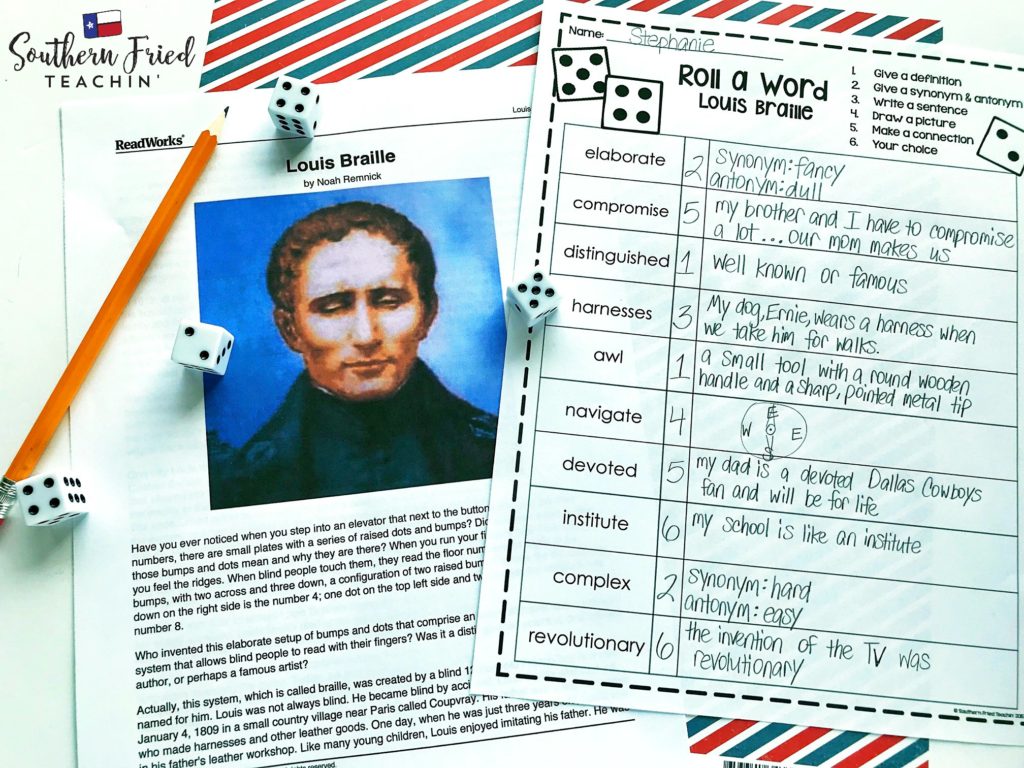

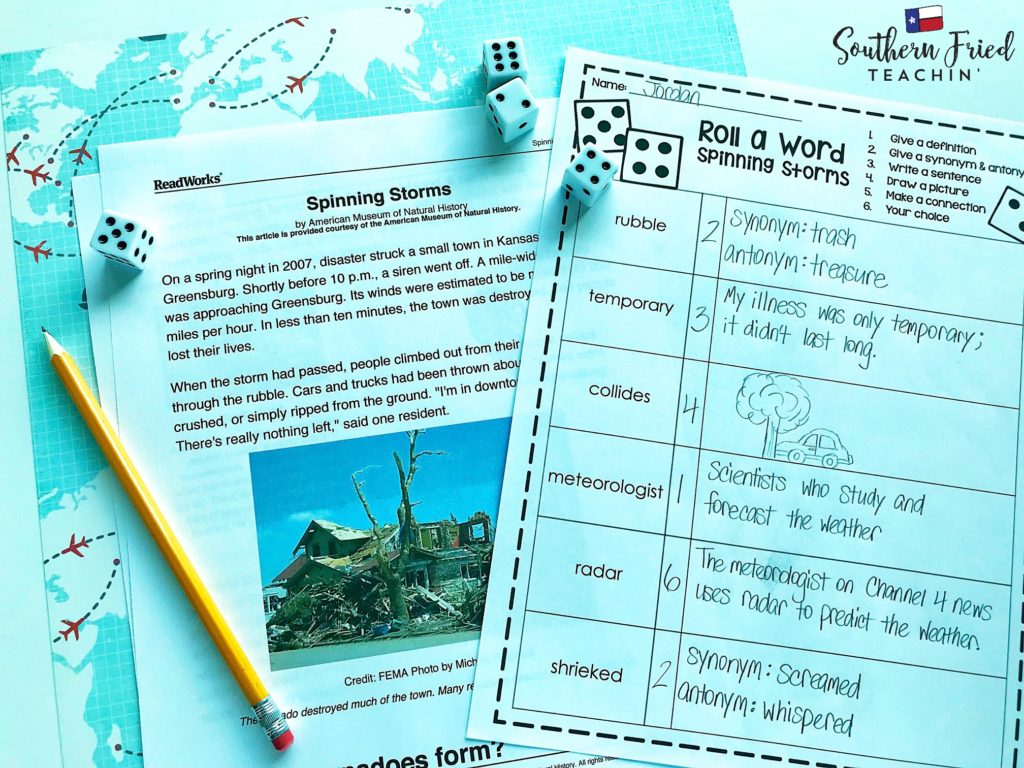
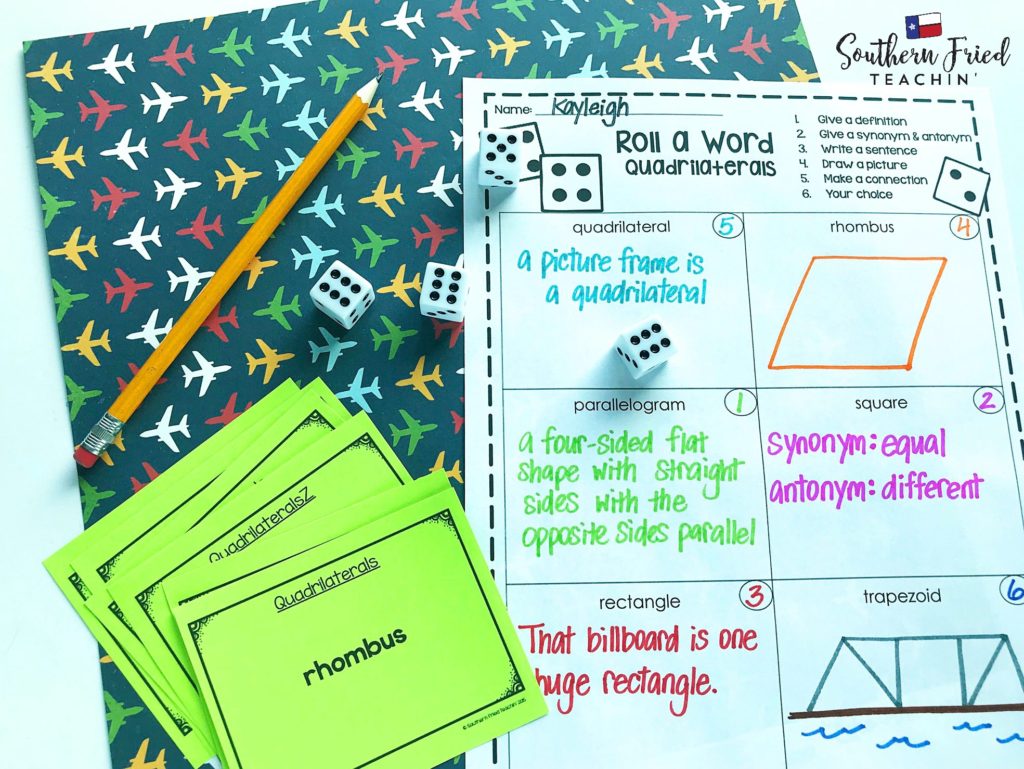
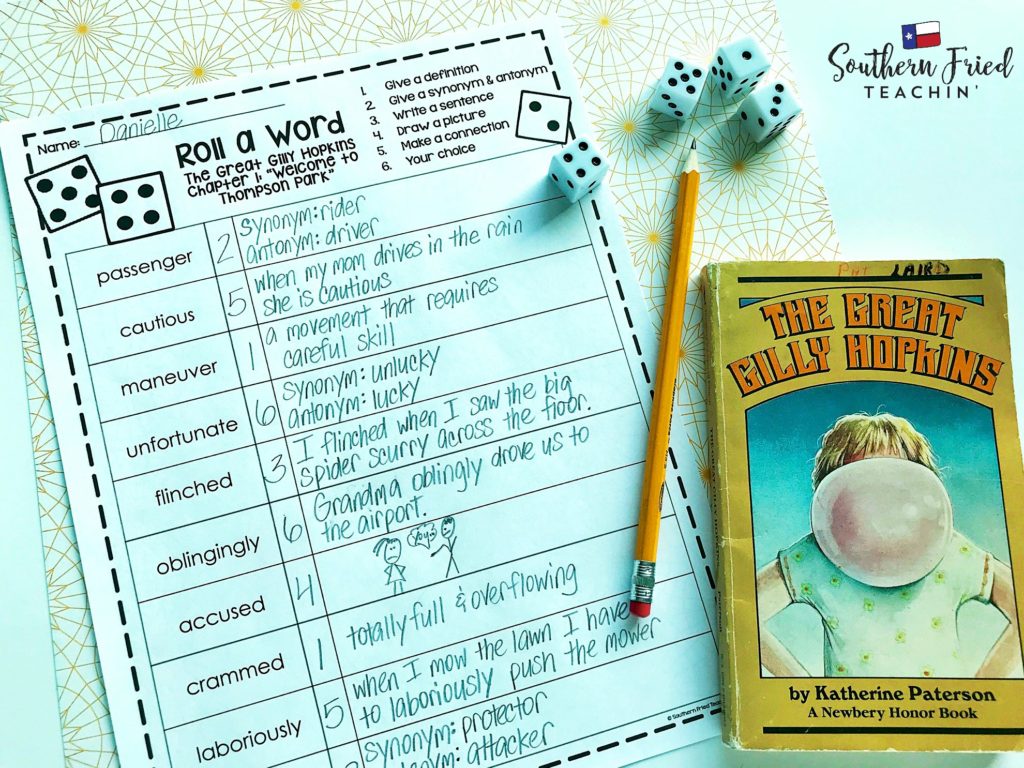
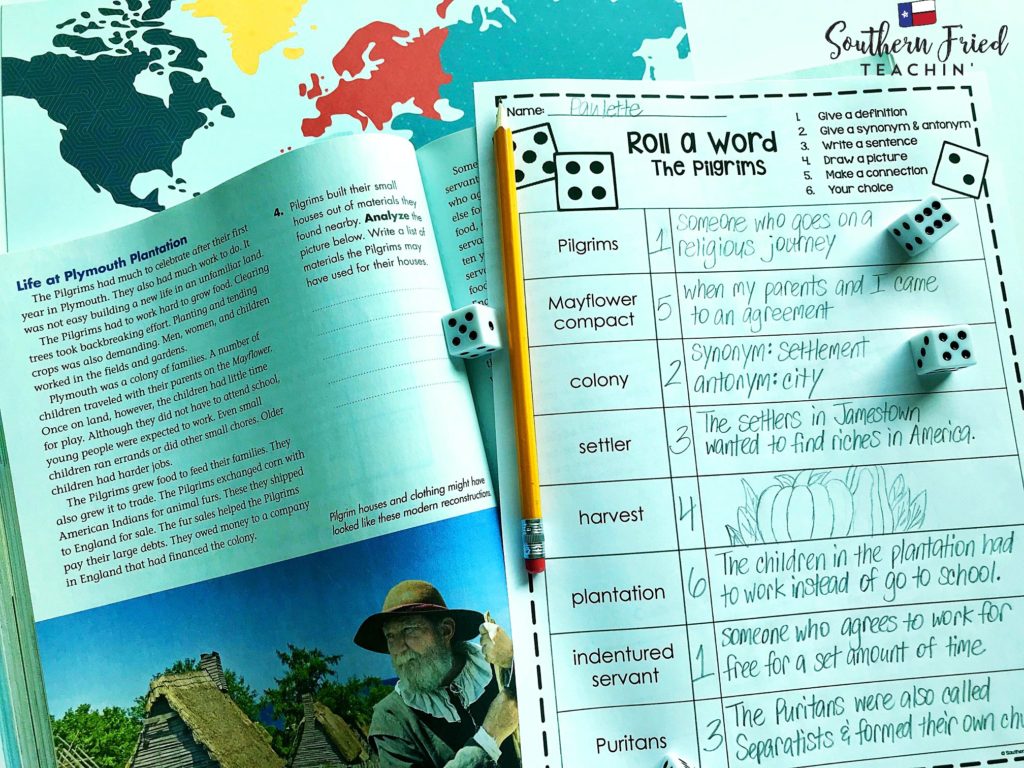
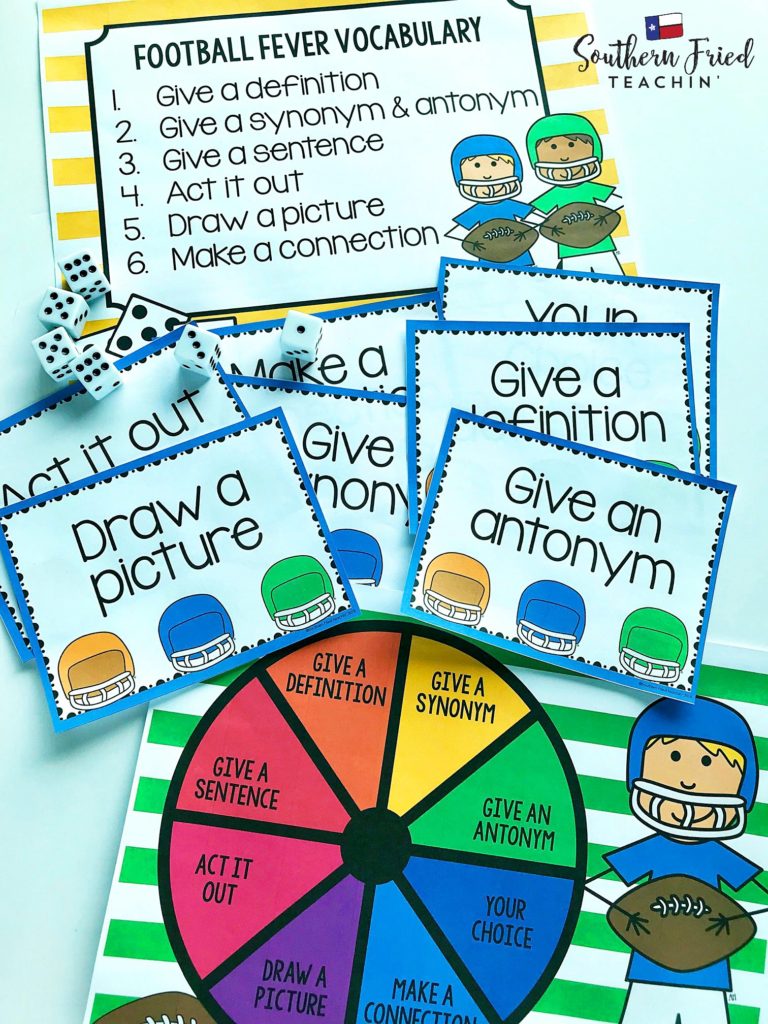


![As teachers we know that vocabulary is pivotal in students’ success. When I was growing up, our vocabulary activities consisted of looking up definitions in the dictionary and copying them down on notebook paper. Do you think I truly understood those vocabulary words? Not. One. Bit. In order to truly understand vocabulary words and what […]](https://i.pinimg.com/236x/97/e8/f5/97e8f54812d68c0d8c084b04391b3255.jpg)

![Have you ever heard of choice boards? I LOVE using choice boards in the classroom. I use them in math, reading, language arts, science, social studies, etc. They work in ANY subject and with ANY topic. Here are my top ten reasons to love choice boards! Students love to be able to make choices in […]](https://i.pinimg.com/236x/b9/24/a5/b924a5282fc6478ab0c9293eb5797602.jpg)
